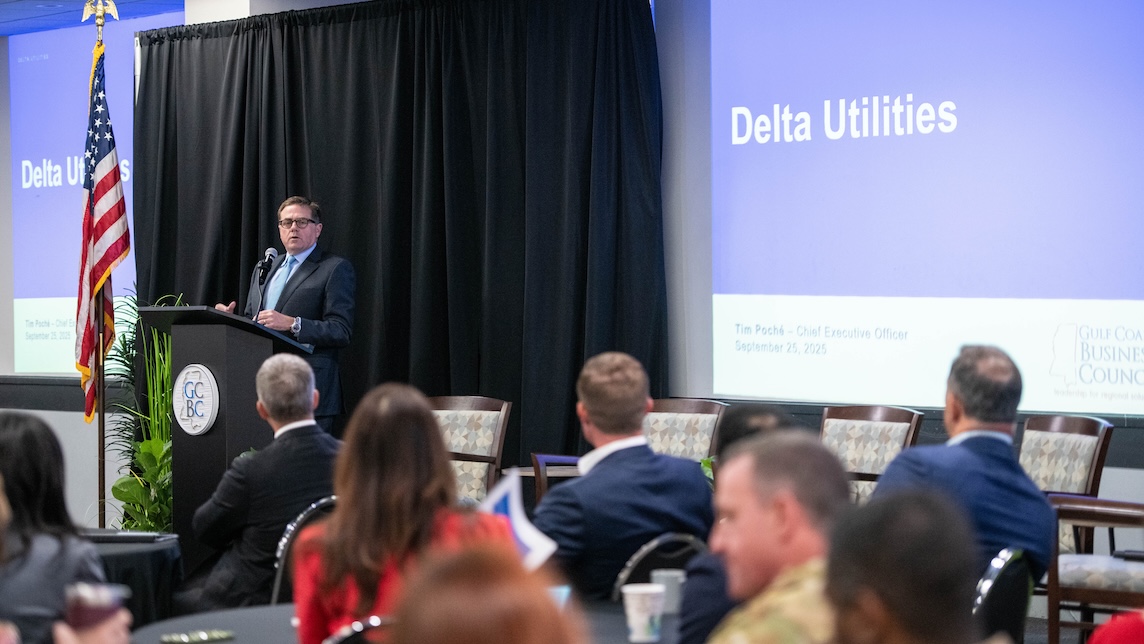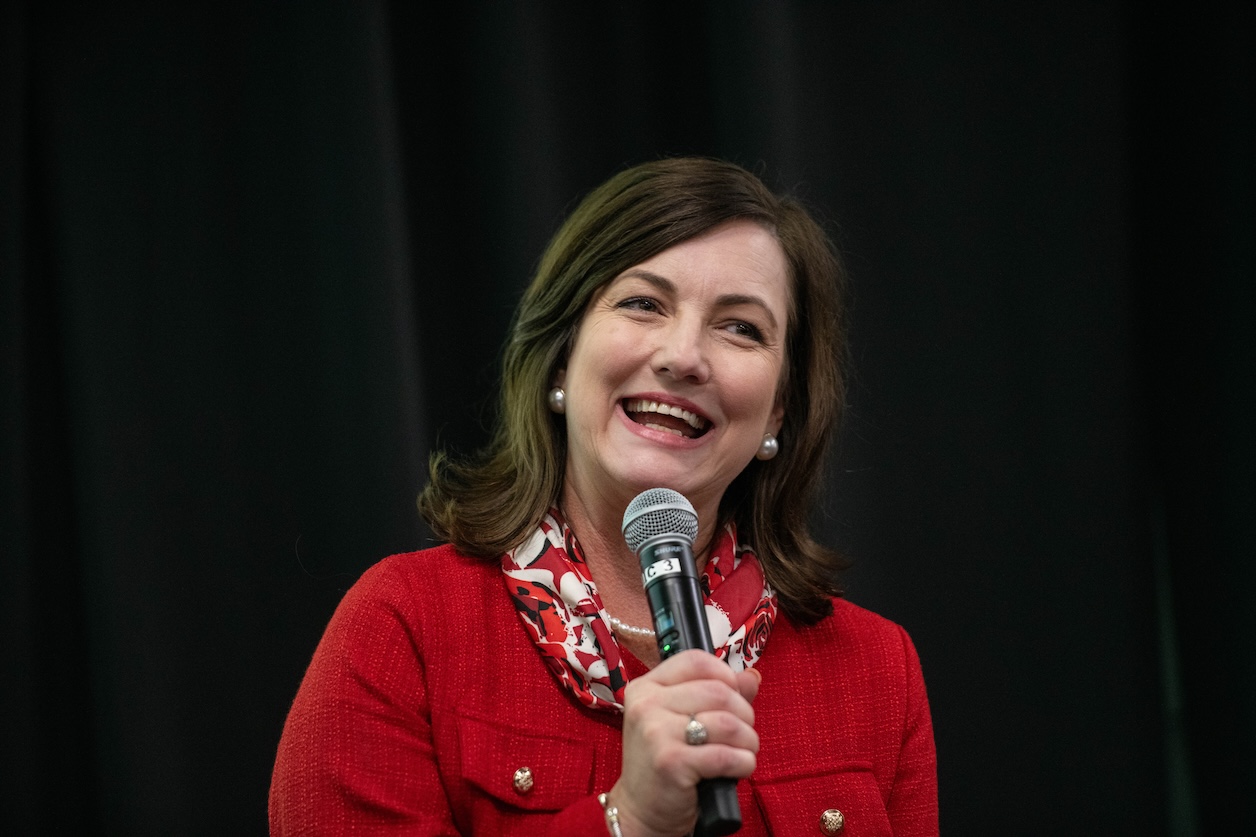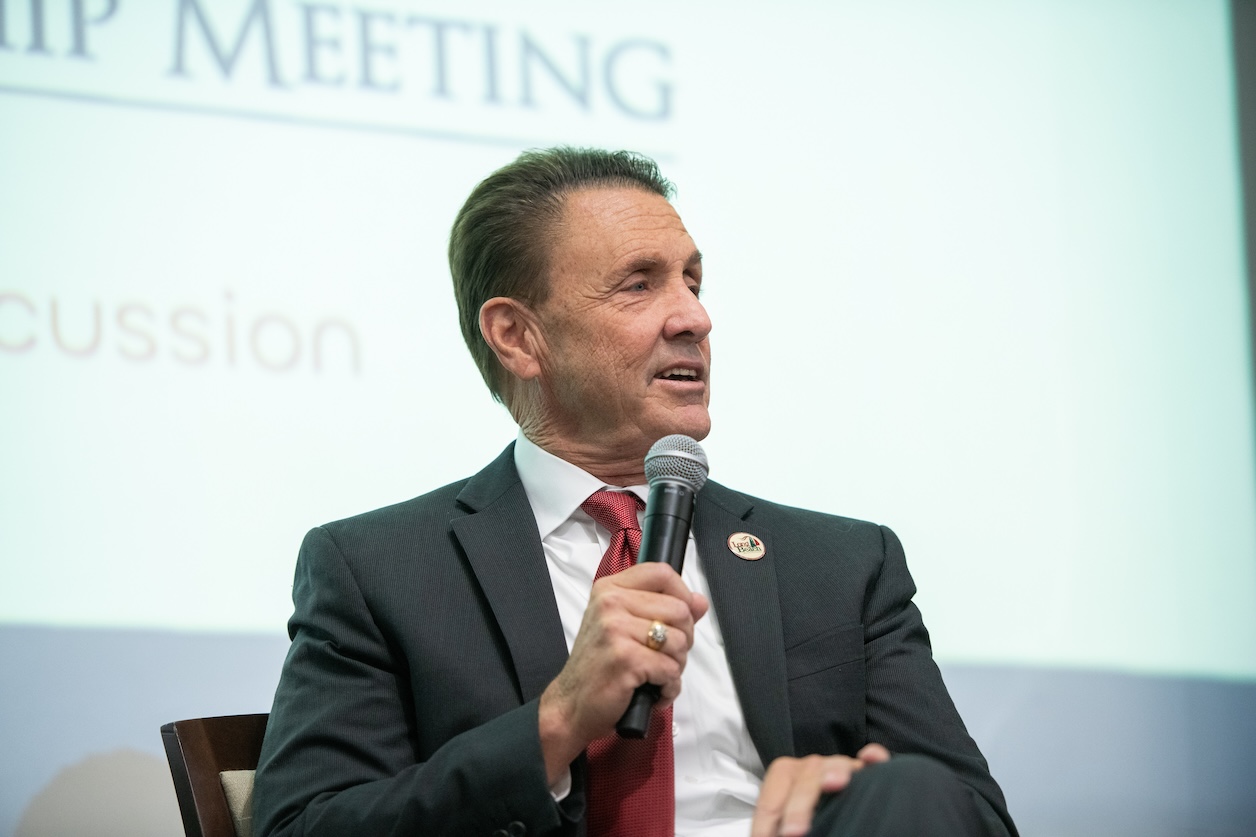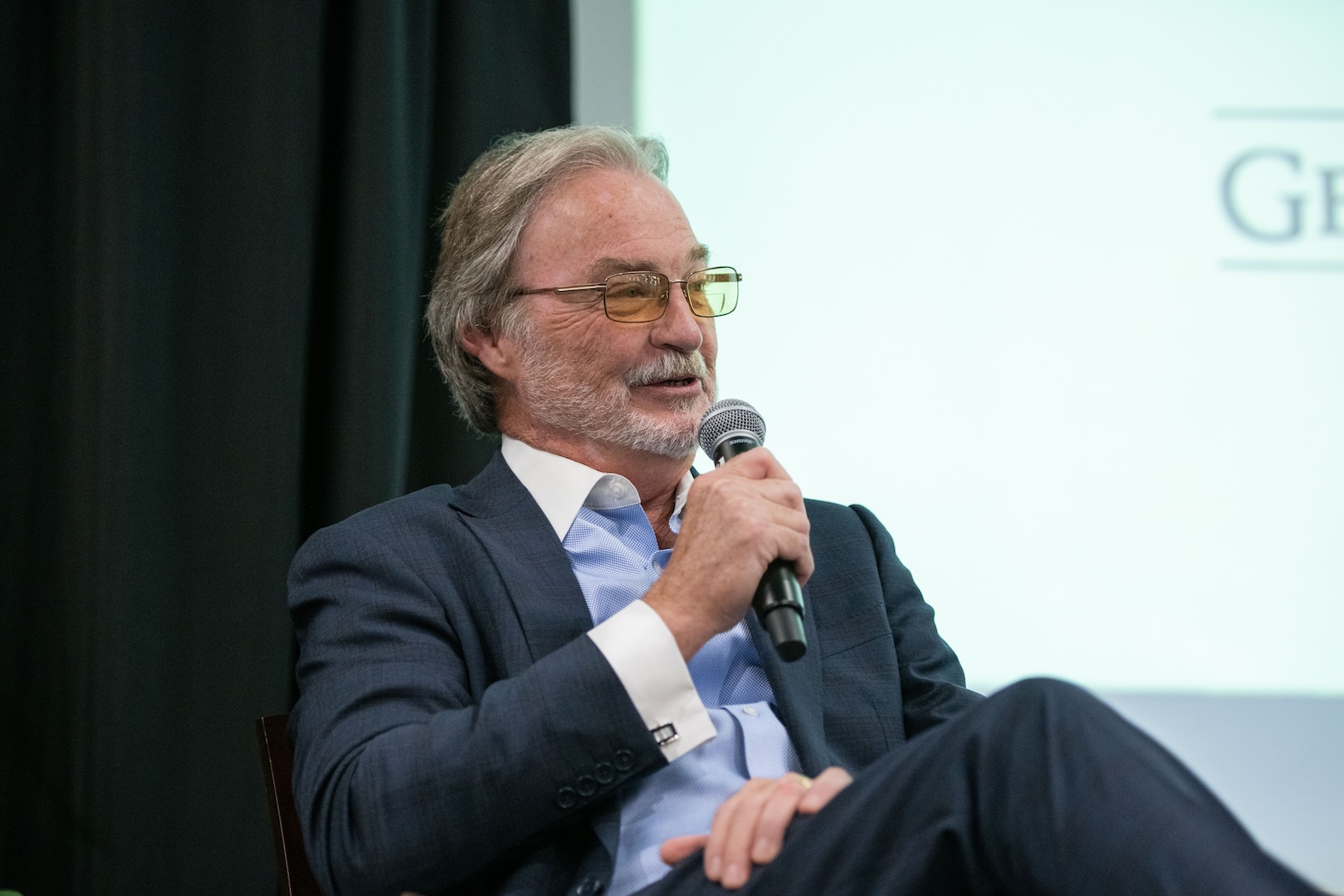The Gulf Coast Business Council’s September General Membership Meeting took place Thursday, September 25 at the Knight Nonprofit Center. Members arrived early for networking and breakfast before diving into a full agenda of updates, guest speakers, and meaningful conversations.
GCBC President & CEO Jamie Miller opened the meeting with announcements and a recap of the Summer Legislative Series, which focused on the Gulf Coast Restoration Fund. He thanked members for their record-setting attendance at those sessions and highlighted the importance of ongoing advocacy efforts.

Delta Utilities: Expanding Energy Services on the Coast
The first presentation came from Tim Poché, CEO of Delta Utilities. He detailed how the company recently acquired CenterPoint and Entergy’s natural gas assets, expanding service to nearly 600,000 customers across Mississippi and Louisiana.
Poché emphasized reliability, affordability, and safety as core values. With most of its infrastructure underground, Delta is well positioned to provide dependable service even in storm-prone areas.
He also spoke about the industry’s growing capital needs as demand for electricity surges, driven in part by data centers and artificial intelligence. Delta is investing in systems and local workforce growth, with hiring underway in Gulfport and across the region.

A Conversation with Coastal Mississippi’s New Mayors
The highlight of the meeting was a panel discussion with the five newly elected mayors of Coastal Mississippi. Each leader shared their budget realities, challenges, and opportunities for growth.
Mayor Kenny Torgeson, Pass Christian
Mayor Torgeson described stepping into office facing an $800,000 deficit. Working with the Board of Aldermen, the city adopted a balanced budget that included raises for police and fire employees. To cover costs, the city raised millage for the first time in 12 years.
Despite the challenges, Torgeson expressed optimism. Pass Christian has seen meaningful downtown transformation thanks to Gulf Coast Restoration Fund investments, including the Pass Bungalows project and new housing developments. Looking ahead, he said a proposed 2% hotel and motel tax could help fund capital improvements and infrastructure upgrades.

Mayor Anna Liese, Diamondhead
Mayor Liese highlighted Diamondhead’s strong track record of balanced budgets and reserves. The city has not raised taxes in several years, a testament to sound financial management. Still, ongoing roadwork and roundabout construction temporarily reduced sales-tax revenues, challenging businesses and city operations.
The city is now moving forward with its Town Center project along the Jordan River. Supported by GCRF funding, the development includes new roads, utilities, and sidewalks, designed to attract mixed-use growth with housing, retail, and restaurants. Diamondhead is also investing in recreational amenities and mobility improvements, including what is now the state’s largest multimodal loop.

Mayor Tim Pierce, Long Beach
Mayor Pierce drew from his decades at NASA Stennis Space Center and local public service to frame Long Beach’s challenges and opportunities. The city recently faced a $1 million revenue gap, requiring a 4% budget cut across departments. Through those cuts, the city achieved a small surplus.
Long Beach is focused on turning challenges into opportunities. FEMA has approved funding for harbor restoration, a long-awaited project that Pierce called the “front door” to the city. He also announced the annexation of the county’s industrial park into city limits, which will provide new tax revenues and strengthen the business base.
The mayor is also working with a new Economic Committee to recruit businesses to replace lost anchors like Winn-Dixie. At the same time, internet sales-tax revenues are being reinvested in sidewalks and thoroughfares to make Long Beach more walkable.

Mayor Bobby Cox, Ocean Springs
Mayor Cox, a lifelong resident, described Ocean Springs as both a community rich in heritage and one facing real financial challenges. The city’s $19 million general fund is supported by tourism-driven revenues, including a robust 2% hotel tax that funds public safety and recreation.
Annexation has created new opportunities but also major service obligations. Cox pointed to the east side of the city as ripe for development, while acknowledging the challenge of retaining city employees in a competitive regional labor market.
He also highlighted key cultural and infrastructure priorities, including restoring the Mary C. O’Keefe Cultural Center and addressing structural issues at the Community Center, which houses Walter Anderson murals. Downtown revitalization and recreation remain top priorities.

Mayor Hugh Keating, Gulfport
Mayor Keating closed the panel with reflections on Gulfport’s thin budget margins and big ambitions. The city recently passed a balanced budget with a $400,000 surplus and raises for sworn patrol officers, but he warned that retention challenges and funding limits remain.
Gulfport’s long-term growth opportunities include major infrastructure and development projects. The Commerce Parkway will open hundreds of acres for commercial development, while downtown’s City Center project—anchored by apartments, a Marriott Tribute hotel, and retail—promises to be a game-changer.
Keating also spotlighted the critical need to expand the North Gulfport Wastewater Treatment Plant, which serves much of Harrison County. With costs projected at $250 million, he argued this project will require a state bond issue to move forward.

Gulf Coast Restoration Fund in Action
Throughout the panel, each mayor described how they hope the Gulf Coast Restoration Fund will enable growth in their communities. From Diamondhead’s new town center to Long Beach’s harbor, from Pass Christian’s retail and housing to Ocean Springs’ public works relocation.
GCBC President Jamie Miller encouraged mayors to collaborate on future proposals. He challenged city leaders to pool political capital and submit fewer but larger region-wide applications that could create transformational impact across Coastal Mississippi.

Looking Ahead: Legislative Priorities
As the 2026 legislative session approaches, the mayors outlined common priorities: infrastructure funding, fair distribution of resources, and continued access to GCRF dollars. Each city is preparing to work closely with the coastal delegation to advocate for transformational projects and critical services.
The discussion also highlighted the importance of addressing the growing gap between online sales-tax revenues and over-the-counter transactions. Leaders agreed that ensuring municipalities receive fair support from state funding formulas will be key to sustaining growth.
A Coast United in Growth
The September meeting underscored the value of bringing public and private sector leaders together under one roof. GCBC members heard directly from local leaders about the financial realities, opportunities for development, and the vision that will shape Coastal Mississippi’s future.
The Gulf Coast Business Council remains committed to being the unifying voice of public and private sector leaders. By working together, our region can grow stronger, attract new investment, and enhance the quality of life for every resident in Coastal Mississippi.


